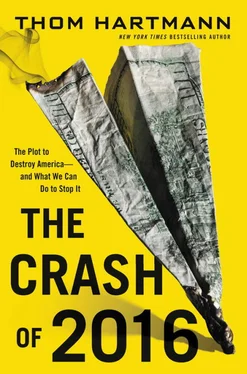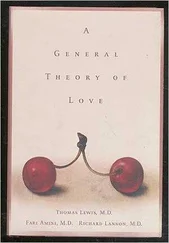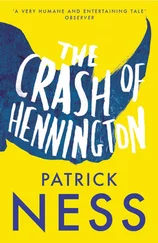The power of “We the People” should be with us and the officials we elect, not nine lawyers who have claimed the illegitimate right to rule over every other branch of our government.
After the crash, we must address the Supreme Court’s power grab and strengthen our system of checks and balances in our government to empower organized people over organized money.
CHAPTER 13
Repair the Fundamentals
The most perfect political community must be among those who are in the middle rank, and those states are best instituted wherein these are a larger and more respectable part, if possible, than both the other; or, if that cannot be, at least than either of them separate.
—Aristotle,
A Treatise on Government , 322 BC
Amending the Constitution and putting an end to corporate personhood could take years. In the meantime, post-crash, we need to get to work repairing the fundamentals that sustained a middle class after the last Great Crash.
That means making our social safety net stronger, reclaiming our commons, taking on Wall Street, investing in working people again, and rolling back Ronald Reagan’s disastrous tax cuts.
A 2009 study by Harvard University found that 45,000 Americans die every single year because they lack health insurance. 178After the last Great Crash, while Europe began rebuilding, several nations adopted single-payer health care systems. After the Crash of 2016, the United States should do the same.
The way we do that is by building off the single-payer system we already have in place that’s worked perfectly for generation after generation of senior citizens and never missed a payment—Medicare. I’ve long advocated what former Congressman Dennis Kucinich calls “Medicare Part E”—“E” as in “for Everybody”—and I still think it’s the right way to go.
Just like in the Occupy Wall Street encampments that sprang up across America at the end of 2011, where doctors volunteered to man tents where people received basic health care for free, our nation should make a commitment to healing the sick without consideration of who or what will make a profit off of it.
This won’t be done overnight, but we can look north toward Canada for a strategy on exactly how to do it.
The Canadian government didn’t just one day say, “It’s time for a single-payer system,” and then poof everyone was covered. Instead, it was a process. It was a process that started locally.
It began in 1946, when Saskatchewan became the first province in Canada to say that everyone should be able to get medical care when they are sick by passing the Saskatchewan Hospitalization Act.
While that was a big step forward, the province wanted to do more. It wanted universal health care for all its citizens, but it just didn’t have the money yet. Then, a few years later, in 1950, Alberta saw what was happening in Saskatchewan and thought it was a good idea. They passed their own plan, which gave health coverage to 90 percent of the population.
In 1957, the federal government saw what was happening around the nation and passed the Hospital Insurance and Diagnostic Services Act, which paid for half of all the costs of any single-payer system passed by the provinces.
After that, by 1961, fifteen years after Saskatchewan started the process, all ten provinces had similar single-payer programs.
Today, Canada has one of the highest life expectancies in the world and spends almost a third less a year on health care than we do in the United States.
That process is already starting in the United States. Vermont and Montana are looking into setting up their own single-payer health care systems based on the Canadian model.
And the largest state in the nation, California, has twice passed a single-payer health care law, only to see it vetoed by Republican governor Arnold Schwarzenegger. Then, with a Democrat in the governor’s mansion in Sacramento, the state legislature came just two votes shy of passing a single-payer law. We’re getting very close to that “Saskatchewan moment” in America.
After the Crash of 2016, we’ll get there, and our nation will be fundamentally changed for the better.
We’ll be a nation where people can start a new business or pursue a new career field without having to worry about losing their insurance. A nation where a mother or father can get sick without it affecting whether their child can afford to go to college. And a nation that’s not drowning in debt because for-profit health insurance CEOs need another mansion.
Look anywhere you want and you’ll never see a successful nation with a sick population or a nation where the sick have to go to prison just to get the care they need. Most of the developed nations in the world that have universal health care, such as Canada and the United Kingdom, created their systems following crises like World War II and the Great Depression. Now we’ll have our chance to do the same.
As Occupy has demonstrated, health care is sacred. We are our brothers’ keepers.
When the Royal Dutch Shell rig Kulluk got stuck on the rocky shores of Alaska on New Year’s Eve in 2013, the people of that state paid close attention—not just because they worried about the potential for another environmental disaster in their backyard but because they pay close attention to their state’s oil industry in general since they each make a lot of money off of it.
Alaska is unique in that it has something called the Alaska Permanent Fund. 179
Believing that all residents of the state should profit off the resources that are naturally below their feet, Alaska takes the money that big oil corporations pay them in oil leases and royalties, invests that money, and then distributes the returns on those investments to each and every resident of the state.
It works out to between $1,000 and $2,000 for every man, woman, and child in Alaska every single year. 180So if you’re a husband and wife with two kids, you could earn as much as $8,000 at the end of the year—and that’s not pocket change for a working family trying to make it by.
Thanks to this supplemental income to each resident of Alaska, the state enjoys the third highest median income in the nation, and is also the second most equal state in the nation.
It’s a system that works, and it’s been embraced by both Democrats and Republicans—even Sarah Palin.
Before the Crash of 2016, this system was applied to the rest of the country, but only the Economic Royalists enjoyed it.
Under their reign, our entire economic model, largely controlled by this billionaire class, depends on enriching the lives of shareholders and business owners—but not average working-class Americans.
From Wall Street, to Big Oil, to the for-profit health insurance industry, business decisions are geared to increasing the wealth of shareholders. Take a gander at the Forbes 400 Richest Americans list and you’ll see a slew of billionaires who collect most of their money in the form of nonlabor dividend income from things they “own,” such as businesses, land, and infrastructure.
Paris Hilton collects a steady stream of dividend checks from her family’s businesses. The Koch brothers get their regular checks in the mail courtesy of the massive energy conglomerate their dad built up known as Koch Industries. Mitt Romney continues to cash his checks from Bain Capital.
It’s good to be a shareholder or corporate owner in capitalist America. And that’s all well and good.
But aren’t we all shareholders in our commons, just like Alaskans? And being such, shouldn’t we all share the dividends every time our commons turns a profit for others, just like Alaskans?
Читать дальше












